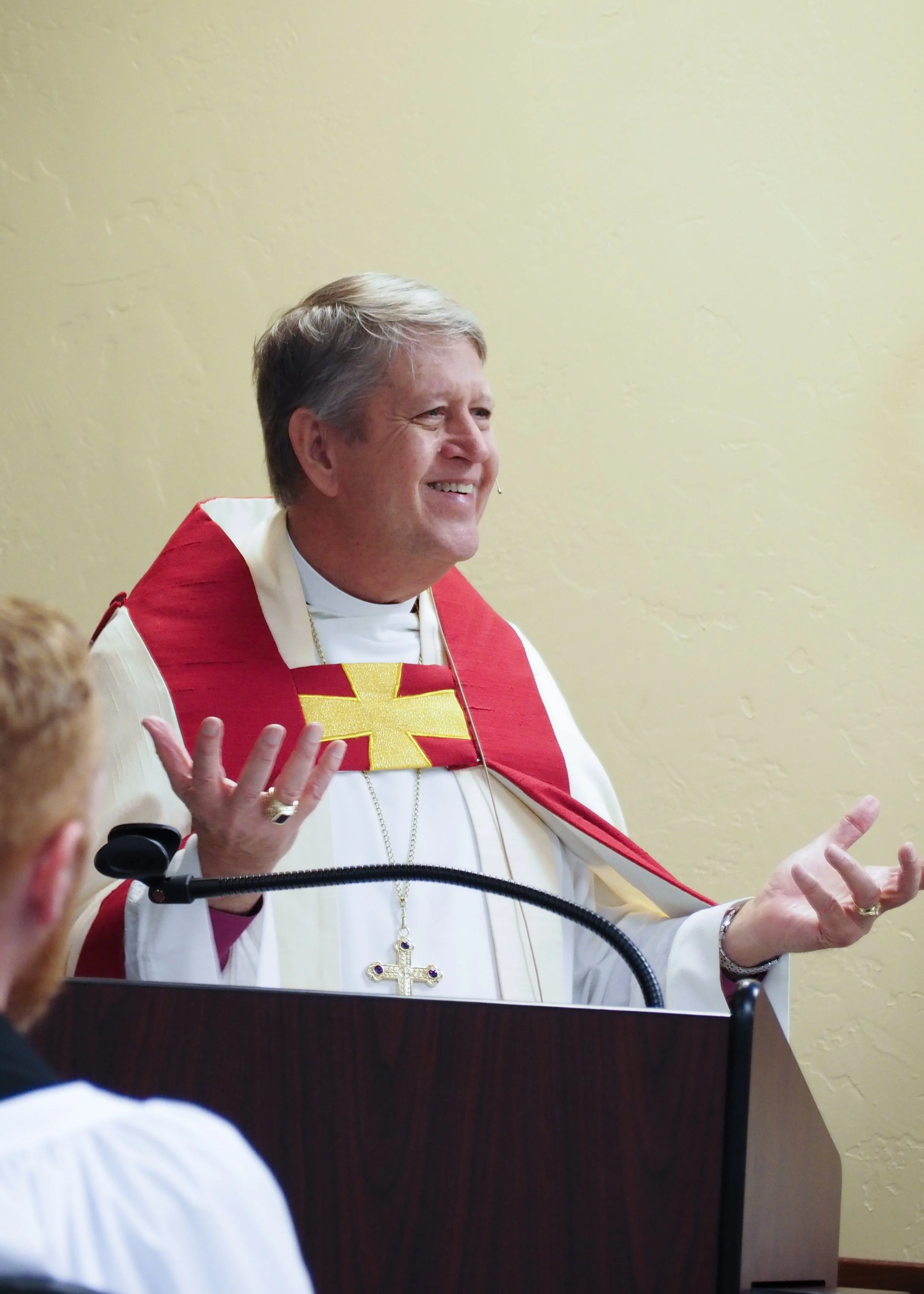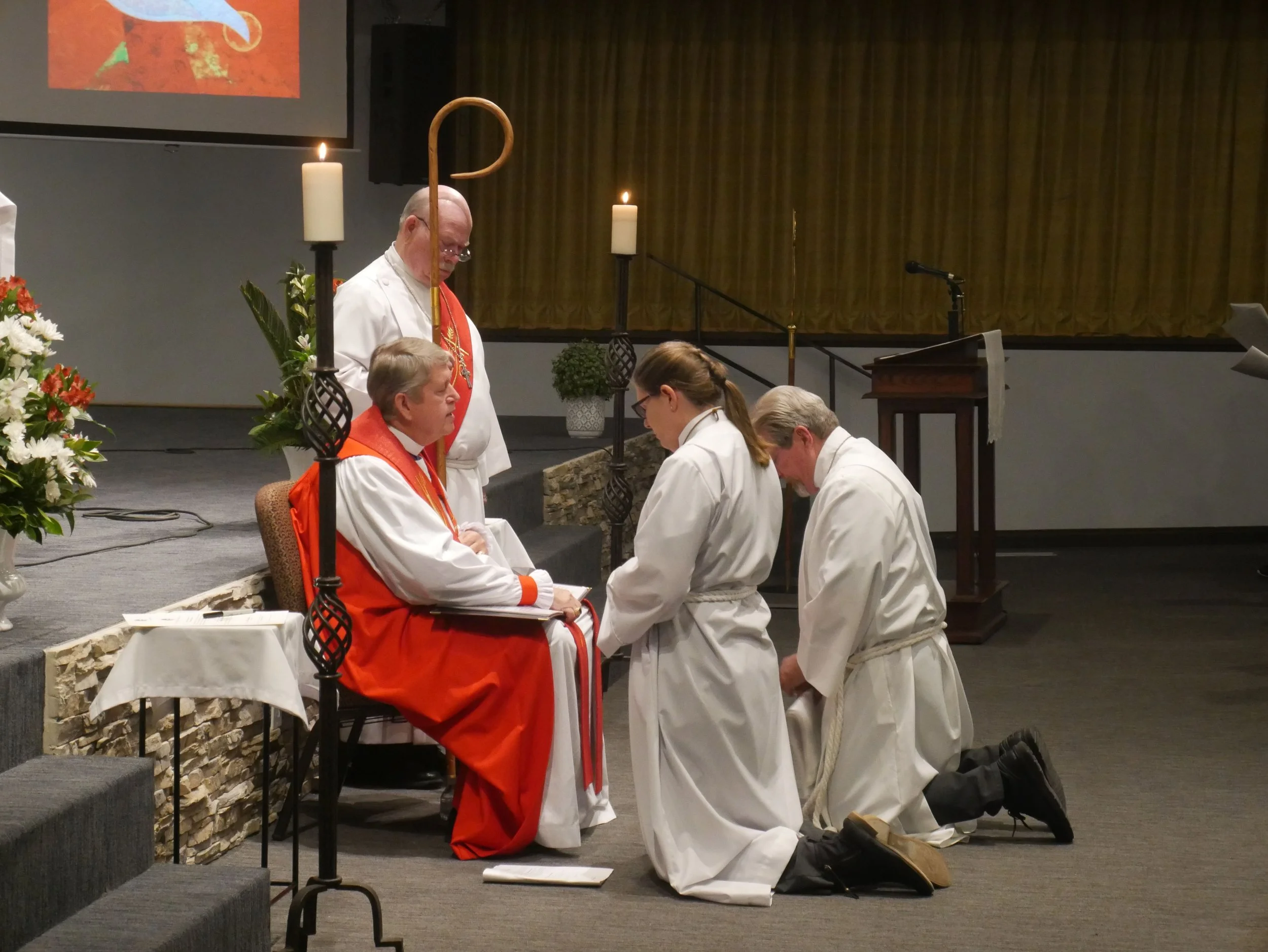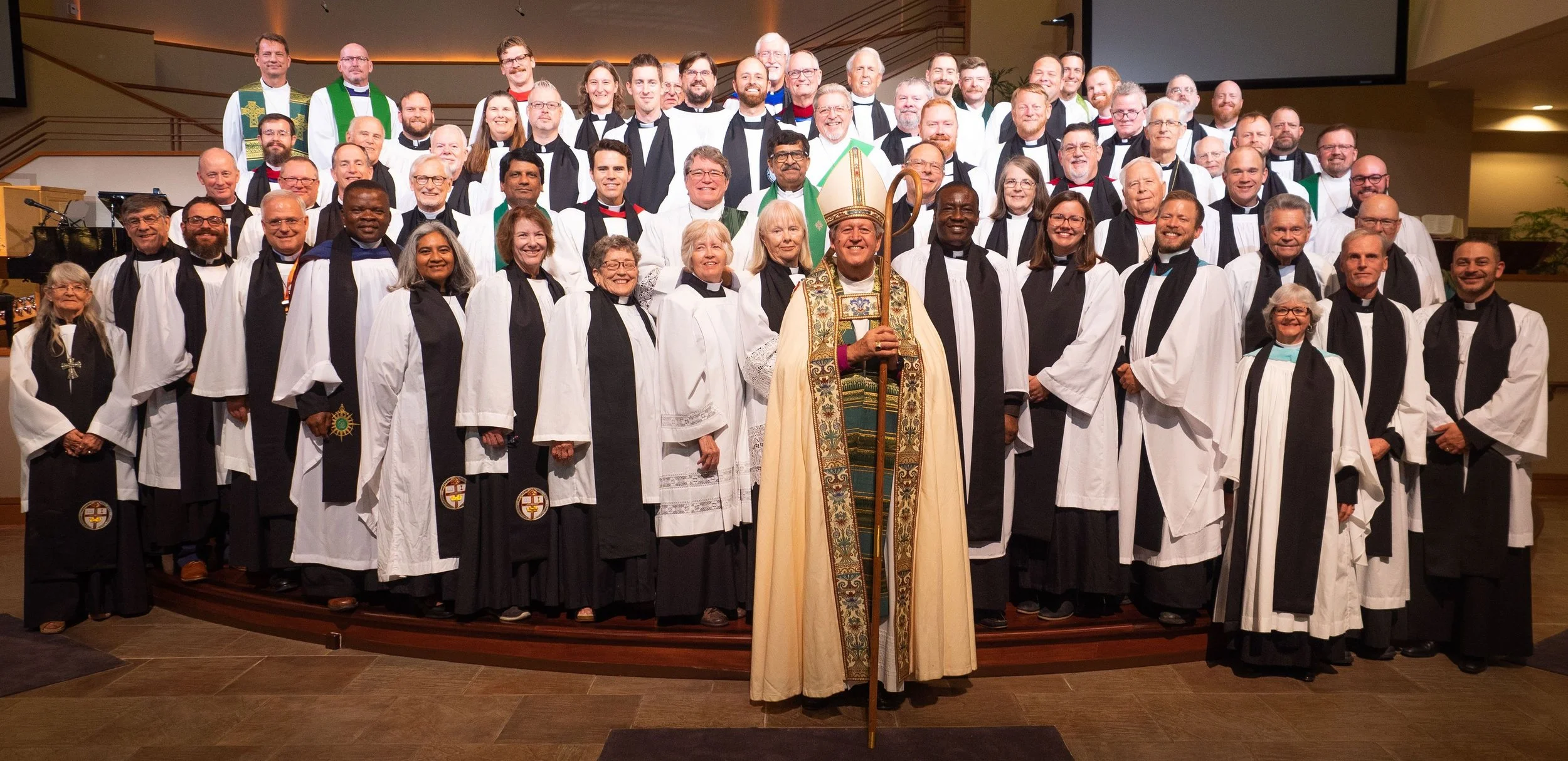
Our Story
The Formation of the Diocese
In June of 2007 sixty delegates from fourteen Anglican congregations in Southern California and Arizona met to begin the process of forming an organizational structure for orthodox Anglicans in the Western United States. In early October, 2007 the House of Delegates met and approved our organizational structure, allowing Western Anglicans to become a diocese-in-formation. In 2008, we connected with the Common Cause Partnership, forerunner of the Anglican Church in North America, asking for and receiving the appointment of the Rev. William Avery Thompson to be the Collegiate Vicar to serve as an ambassadorial link between our organizations.
In June of 2009, the Anglican Church in North America (ACNA) was born and one of the first new dioceses to be admitted was the Diocese of Western Anglicans. The Rt. Rev. William Avery Thompson was selected to be the first Bishop of the Diocese of Western Anglicans. Having served as rector of All Saints’ Anglican Church in Long Beach, CA for thirty-seven years, Bishop Bill was well equipped to lead the twenty-eight local churches and church plants that made up the diocese at its inception.
Bishop Bill’s episcopate began several years after many of the local churches of the Diocese had voted to depart from the Episcopal Church and mere months after the Supreme Court of California decided in favor of the Episcopal Diocese of Los Angeles, forcing local churches to surrender their properties. In this contentious context, Bishop Bill helped lead the Diocese in the formation of its identity not as former Episcopalians, but as members of the Anglican Church in North America (ACNA) and the Global Anglican Future Conference (GAFCON). Critical to that formation was the work of planting churches and creating a new prayer book. For a season Bp. Bill led the Prayer Book and Common Liturgy Task Force and helped trial the new liturgical texts that would become the 2019 Book of Common Prayer.
In order to better govern and equip the churches that span multiple states, Bishop Bill established four deaneries in the diocese: Arizona, Los Angeles, Rocky Mountains, and San Diego. The aim of these deaneries was not only to consolidate church plant and growth efforts in each region, but to grow each region into its own diocese.
Following the discovery of health concerns, in late 2013 Bp. Bill announced his intention to retire as Bishop of the Diocese effective June 30th, 2014.
Advancing the Mission of the Church
On January 25th, 2015 our second Bishop, the Rt. Rev. Dr. M. Keith Andrews, was consecrated by the Most Rev. Dr. Foley Beach and thirteen other bishops. Throughout his tenure Bishop Keith continued and advanced the work begun by Bishop Bill, shifting the diocese from a state of maintenance to one of multiplication. In order to complete the needed maintenance of a new diocese, Bishop Keith dramatically improved the infrastructure of the diocese through regular investment in and development of the institutional structures and resources of the ordinary, partnership with other bishops in setting standards for the ordination process, and pastoral care for clergy and laity through Refresh and Refocus for lay leaders and clergy. Each of these initiatives dramatically strengthened the discernment, formation, development, and health of clergy within the diocese and ensured that the lay leaders working alongside clergy in the mission of the church received the needed assessment and care to continue the work of reaching the world with the gospel of Jesus Christ.
Through Kingdom Conferences, Synods, and Next Steps in Mission, Bishop Keith established regular patterns of training, equipping, and supporting laity and clergy in evangelism, growth, and multiplication. One of the results of this work was the establishment of the Lay Missioner Ministry, which recruits and trains laity to form a missional community in a region without a church presence with the aim of eventually forming a local church. Lay Missioners are licensed by the bishop to share in the gathering and mobilizing ministry that develops the church so that others may also be called, formed, equipped and sent as Jesus followers to serve His purposes in the harvest field. Bishop Keith also elevated the role of the diaconate, providing a Deacons School to equip and train deacons. Deacons serve under the authority of the bishop in partnership with a local presbyter, spending most of their time equipping the laity for mission, reaching those on the margins of society with the good news of Jesus and the resources of his kingdom, and catechizing the laity through teaching, modeling, and mentoring.
When the COVID-19 Pandemic began in 2020 Bishop Keith worked with local churches to establish guidelines and policies for continuing to serve people through lockdown and the various stages before reopening. Bishop Keith provided assistance in assessing and improving each church’s online presence, particularly as streaming became necessary to engage parishioners.
Bishop Keith continued to equip and empower the four deaneries, building further structure within each Deanery for clergy formation and church planting. The fruits of the vision of deaneries becoming dioceses began to bloom under Bishop Keith’s guidance, when in May of 2023 the Rocky Mountain Deanery transitioned to become the Yellowstone Missionary District (YMD). In March of 2023 the Rt. Rev. Mark Zimmerman was appointed to serve as Suffragan Bishop for Special Mission within the Yellowstone Missionary District to support and equip laity and clergy in Idaho, Montana, Utah, and Wyoming as they continue to strengthen existing churches and plant new ones.
During his tenure, Bishop Keith also emphasized the need for ethnic ministry outreach, including to the substantial Hispanic populations throughout the Southwest. The Crozier Society was formed to mobilize funding resources for strategic areas of mission within the Diocese. The Clergy Formation model was clarified and made more robust, and careful guidance was developed for leadership transitions in Local Churches, to sensitively and fairly navigate potentially difficult times in a church's life. Finally, advancements in Church Planting were consistently pursued, and the diocese already has a handful of church plants in the pipeline all focused on reaching distinctive target groups. At the outset of his transition, the diocese was well-equipped to continue the work of multiplication through further evangelism, church planting, and loving service in the world.
Fostering a Heart for the Lost
On March 29th, 2025 our third Bishop, the Rt. Rev. Dr. J. Philip Ashey III, was consecrated by the Most Rev. Steve Wood and twenty other bishops. Bishop Phil has spent his first months visiting churches throughout the Diocese and encouraging clergy and laity alike to continue to foster a heart for the lost. We are excited to see how the Lord leads Bishop Phil as he shepherds us through this next season in the life of the Diocese of Western Anglicans.










